The island paradise is under attack. Thanks to destabilizing forces of climate change – rising sea levels and strengthening storms, particularly – some of Earth’s most picturesque locations are being scrubbed from the map. And the residents of these postcard settings are being forced to consider relocating to avoid being swept away into the sea.
In Tuvalu, a collection of reef islands and atolls midway between Hawaii and Australia, saltwater intrusion has already made it difficult to grow traditional crops, and the rainfall that provides much of the drinking water has become unreliable. Despite investments in freshwater storage systems and makeshift bulwarks to slow coastal erosion, much of the nation – where the average land height is a mere 2 meters (about 6.5 feet) above sea level – will likely be under water by the end of the century.
“It’s already like a weapon of mass destruction,” Tuvalu Prime Minister Enele Sopoaga said last month of the impact climate change is having on his nation.
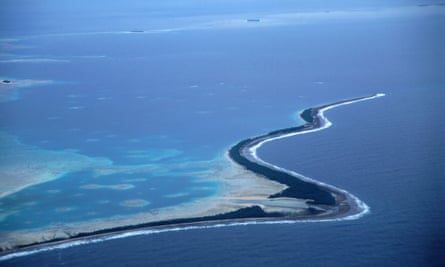
In what has been called a landmark ruling, New Zealand’s immigration court in August granted a Tuvaluan family legal residency after the pair’s attorneys argued, in part, that climate change and overpopulation has made life untenable on their native island. The ruling in favor of Sigeo Alesana and his family came just three months after New Zealand rejected the world’s first climate refugee claim, that of Ioane Teitiota from Kiribati.
Because the 1951 United Nations Convention on the Status of Refugees still doesn’t recognize climate change as valid factor for refugee status, the New Zealand attorneys representing the Tuvaluan couple also relied on more traditional arguments – including the existence of established family relationships inside New Zealand – to make their clients’ claim.
“To be successful, it need[ed] to be argued beyond the convention, which is what we did,” Carole Curtis wrote the Guardian by email.
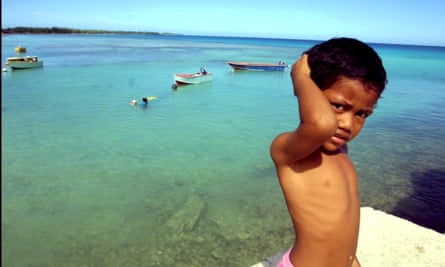
But the roughly 10,800 residents of Tuvalu are by no means the only ones at risk of losing their homes to climate change. While the estimates of future migrants vary widely, from tens of thousands to one billion, there’s little question that an increase in climate refugees is on the way.
The Intergovernmental Panel on Climate Change reported in a 2012 paper that forced migrations will likely grow in the years ahead. “For locations such as atolls,” the report reads, “in some cases it is possible that many residents will have to relocate.”
A thousand miles due west of Tuvalu, a staged relocation effort has been underway for years, as hundreds of islanders from the Carteret atoll make their way to the larger island of Bougainville, 50 miles southwest.
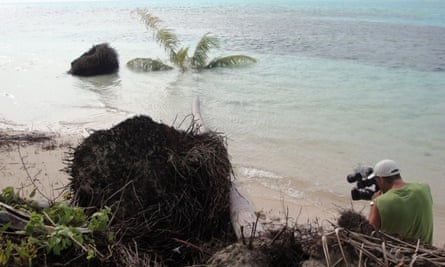
The increasing infertility of the atoll soils, a consequence of increasing saltwater intrusion, has been a major factor in the decision to relocate, said Ursula Rakova, who is helping lead the Carteret islanders to the “big island”.
“On mainland Bougainville, food crops do not necessarily have to be planted, you leave something on the ground and within the next couple of days it is growing,” she said.
However, on the Carterets, is it difficult to get things to grow in the increasingly saline soil and malnourishment is common. “Women and children may drink a young coconut in the morning and this [must] hold them for the rest of the day,” Rakova said.
Considered the most climate-vulnerable nation in South Asia by the Asian Development Bank, Maldives is also suffering the brunt of rising seas. As with the Tuvalu, talk of back-channel negotiations for future mass migrations to Australia, has long buzzed among residents of this chain of 26 atolls.
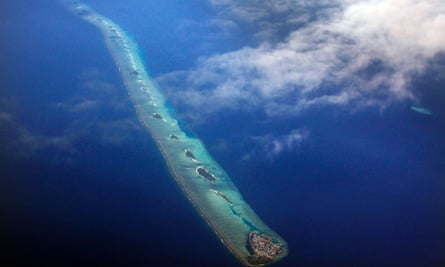
“It’s a slow onset, little impacts,” said Thilmeeza Hussain, a former UN representative from the Maldives who has since founded Voice of Women, which she describes as the only NGO addressing climate change and women in the world’s lowest-lying country.
“For example, people living closest to the beach, their houses may get washed away by a storm but nobody’s talking about it because it’s just one or two houses. But what do they do? It’s a small country and we don’t have homeowner’s insurance and things like that. People spend their whole life savings to build these homes and they’re left with nothing.”
The observation highlights the IPCC’s finding that the worst elements of the climate-driven disasters in the next 20 to 30 years will likely be due more to a lack of resources within a community than a dramatic shift in storm intensity.
It’s a point that Texas-based climate scientist, Katharine Hayhoe, named earlier this year as one of the world’s most influential people by Time Magazine, drives home.
“The biggest reason I study climate change is because of the impact that it has on the people who don’t have the resources to adapt,” Hayhoe said. “We have a perception, many of us, that climate change is about saving the polar bears.”

Of course, it’s not only island dwellers who are being forced from their homes by human-caused global warming events: the 2010 Pakistani floods, one of the largest displacement events of the last decade, drove millions from their homes powered by the additional heat generated by industrial greenhouse gas emissions thickening in the upper atmosphere, according to the World Meteorological Organization.
And today’s extreme drought gripping California, threatening to settle into a potentially decades-long megadrought, may come to cause major conflict and dislocation, according to prominent climatologist and author Michael E Mann.
“It’s not just record drought, it’s off-the-scales drought,” he said. “We think of environmental refugeeism as something that afflicts the developing nations but not us. But if the drought in California becomes the new normal, and there’s a very real possibility that it does, then we are going to see people driven from their communities, driven from that state. It will not be able to meet the water needs of its population if we continue on this course that we’re on.”

The difference between an extreme climate event and a humanitarian disaster has a lot to do with a community’s preparedness and resources, Hayhoe stressed.
“When Hurricane Katrina struck, for example, most of those with the resources to evacuate – both in terms of transportation and information – did,” she said. “The people who did not have access to that struggled to get away, maybe couldn’t get away, and didn’t have the insurance to rebuild their houses.”
Itza Carbajal was 14 years old when the United States’ costliest disaster smacked the coast with a nearly 30-foot wall of water. The next day, she and her mother joined a three-car caravan out of the city as the flood-control levies – mere blocks from their newly purchased home – began to fail and the mayor ordered a mandatory evacuation.
“I think that the situation of New Orleans presents us with a prime example of what happens when vulnerable people are left to fend completely for themselves both before, during, and after the storm,” Carbajal, now a community organizer in San Antonio, Texas, wrote the Guardian. “As a natural disaster, I think Katrina demonstrates more about our own negligence as humans towards the needs of our earth, as well as our own arrogance as to how much control we have over this planet.”
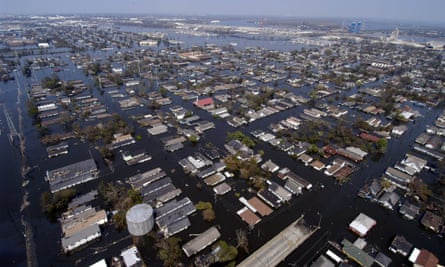
Most of New Orleans sits below sea level and the storm eventually left most of the city – including the Carbajal’s home – submerged in as much as 20 feet of water.
Of course, the resources available to weather such an event are even more limited in tiny Tuvalu.
So while the most recent gathering of small island states held in Samoa this month failed to take up the pressing issue of expanding definitions under the UN Convention on the Status of Refugees, you can expect Prime Minister Sopoaga to be less gentle when he co-chairs a UN climate summit in New York City on 23 September.
“There are no boundaries to the effects of climate change,” he told Australia’s ABC. “We are dealing with saving human lives – and therefore saving Tuvalu is also saving the world.”
The Vital Signs platform is funded by Avery Dennison, Domtar and Chiquita. All content is editorially independent except for pieces labelled advertisement feature. Find out more here.
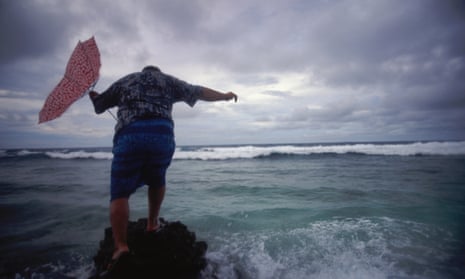








Comments (…)
Sign in or create your Guardian account to join the discussion